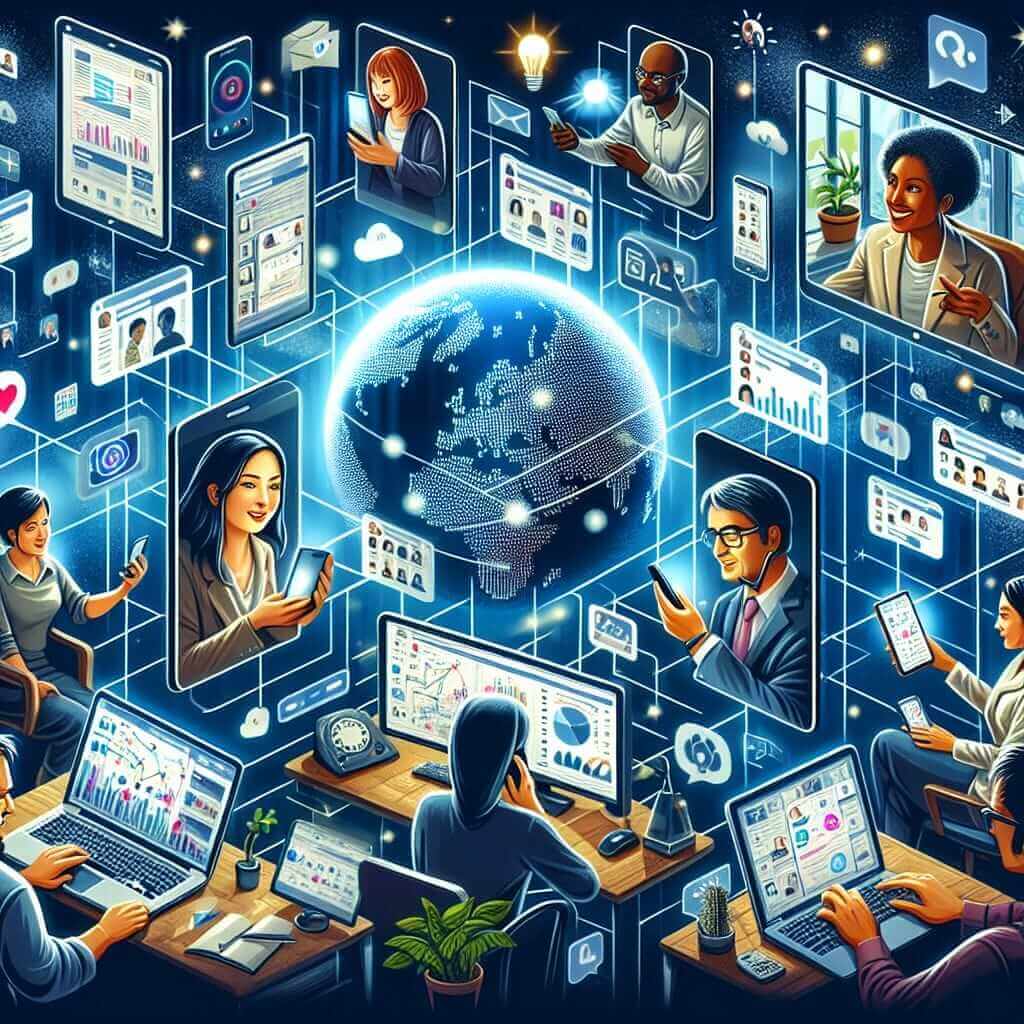The Reading module of the IELTS exam assesses your ability to understand and interpret written English, including the ability to identify key ideas, understand detailed arguments, and distinguish between main ideas and specific details. Topics related to technology and social interactions have seen increasing popularity in recent years, reflecting contemporary societal changes and the pervasive influence of digital technology. Therefore, understanding how digital technology impacts social interactions can be beneficial not only for your exam preparation but also for staying updated with current trends.
Historically, topics related to technology’s influence on society have frequently appeared in IELTS Reading sections. Given the dynamic nature of technological advancements, it is highly plausible that similar themes will continue to appear in future IELTS exams.
Reading Passage: The Influence of Digital Technology on Social Interactions
Passage
The Influence of Digital Technology on Social Interactions
Digital technology, encompassing a wide range of devices and platforms such as smartphones, social media, and messaging apps, has drastically transformed how we interact and communicate. This transformation has brought both positive and negative repercussions in the realm of social interactions.
One of the most notable positive impacts of digital technology is the facilitation of instant communication. Platforms like WhatsApp, Facebook, and Snapchat allow individuals to stay connected with friends and family regardless of geographical barriers. This ease of communication has strengthened long-distance relationships and has expanded social networks.

Moreover, digital technology has provided communities and individuals with tools for social activism. Social media platforms have been instrumental in raising awareness about social issues, mobilizing movements, and fostering discussions on a global scale. The #MeToo movement, for instance, garnered worldwide attention and support through platforms like Twitter and Instagram.
However, the omnipresence of digital technology has also led to notable negative consequences. One such impact is the decline in face-to-face interactions. The convenience of digital communication often replaces more personal, real-life encounters, potentially leading to decreased emotional connections and increased feelings of isolation.
Another significant concern is the issue of digital addiction. The compulsive need to check messages and social media updates can result in distraction, decreased productivity, and even mental health issues such as anxiety and depression. This phenomenon is especially prevalent among younger generations who have grown up with digital technology as an integral part of their lives.
In addition, there’s the problem of misinformation and digital echo chambers. Social media algorithms tend to show users content that aligns with their existing beliefs, which can reinforce biases and limit exposure to diverse perspectives. This can result in a polarized society where individuals are less likely to engage in constructive dialogues with those who hold differing opinions.
While digital technology enables swift communication and social connectivity, it also necessitates a balanced approach to mitigate its drawbacks. Understanding and managing the influence of digital technology on our social interactions is crucial for cultivating healthy, meaningful relationships in a digital age.
Questions
Multiple Choice
-
What is a significant positive impact of digital technology on social interactions?
- A. It replaces face-to-face interactions.
- B. It facilitates instant communication.
- C. It leads to digital addiction.
- D. It increases misinformation.
-
What movement is mentioned as having gained support through social media platforms?
- A. Climate Change.
- B. Black Lives Matter.
- C. #MeToo.
- D. Occupy Wall Street.
Identifying Information (True/False/Not Given)
-
Digital technology has led to an increase in face-to-face interactions. (True/False/Not Given)
-
Younger generations are particularly vulnerable to digital addiction. (True/False/Not Given)
Matching Information
-
Match the information with the paragraphs:
-
A. Decline in face-to-face interactions.
-
B. Tools for social activism.
-
C. Digital echo chambers.
-
D. Instant communication.
-
Paragraph 1: ____
-
Paragraph 2: ____
-
Paragraph 3: ____
-
Paragraph 4: ____
-
Summary Completion
Complete the summary using the list of words (A-F):
Digital technology, such as (6) and social media platforms, has transformed communication. It has helped maintain (7) relationships and fostered social activism. However, it also causes a decline in (8) interactions and contributes to digital addiction, particularly among (9) generations. Additionally, the spread of (10) _____ is a concern.
A. younger
B. misinformation
C. long-distance
D. smartphones
E. face-to-face
F. email
Answer Key
- B. It facilitates instant communication.
- C. #MeToo.
- False.
- True.
-
- Paragraph 1: D
- Paragraph 2: B
- Paragraph 3: A
- Paragraph 4: C
- D. smartphones
- C. long-distance
- E. face-to-face
- A. younger
- B. misinformation
Common Mistakes and Tips
Common Mistakes
- Reading too quickly: Many candidates skim through the passage too quickly, missing key details. Ensure you read thoroughly and understand the main ideas.
- Misinterpreting the question: Pay close attention to what the question is asking. Words like “always,” “never,” and “only” can change the meaning of a statement significantly.
- Not managing time: Allocate your time wisely. Spend more time on questions that are worth more points or that you find more challenging.
Vocabulary
- Facilitation (noun): /fəˌsɪlɪˈteɪʃn/ – The process of making something possible or easier.
- Omnipresence (noun): /ˌɒmnɪˈprezəns/ – The state of being widespread or constantly encountered.
- Misinformation (noun): /ˌmɪsɪn.fɔːˈmeɪ.ʃən/ – False or inaccurate information.
Grammar
- Conditional clauses: Often used to discuss hypothetical situations or to outline consequences.
- Example: “If digital communication replaces face-to-face interactions, it could lead to decreased emotional connections.”
- Passive voice: Useful for emphasizing the action rather than who is performing the action.
- Example: “The #MeToo movement was supported through social media platforms.”
Advice for High Reading Scores
- Practice regularly: Consistent practice helps improve speed and accuracy.
- Expand your vocabulary: A broader vocabulary will help you understand a wider range of texts.
- Understand question types: Familiarize yourself with the different types of questions you may encounter.
- Take practice tests: Simulate test conditions to build stamina and gain a realistic sense of timing.
- Seek feedback: Review your answers to understand your mistakes and learn from them.